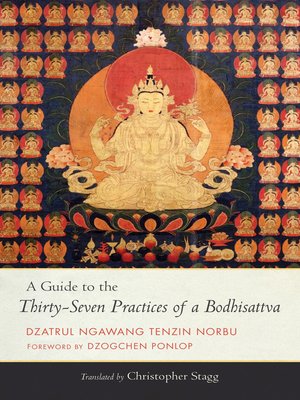
Sign up to save your library
With an OverDrive account, you can save your favorite libraries for at-a-glance information about availability. Find out more about OverDrive accounts.
Find this title in Libby, the library reading app by OverDrive.



Search for a digital library with this title
Title found at these libraries:
| Library Name | Distance |
|---|---|
| Loading... |
A fresh translation and commentary to Tibet's most famous text on living like a bodhisattva
Who are bodhisattvas and what do they practice? In the fourteenth century, the Tibetan Buddhist master Gyalse Tokmé Zangpo answered these questions in a now classic teaching called the Thirty-Seven Practices of a Bodhisattva. This text, consisting of inspiring verses distilling the entire Mahayana path of compassion, continues to inspire modern-day Buddhist masters, including His Holiness the Dalai Lama.
One of the most important commentaries on the Thirty-Seven Practices is by the twentieth-century master Dzatrul Ngawang Tenzin Norbu, known as the Buddha of Dza Rongphu, and is translated here along with associated meditation instructions for the first time. Dzogchen Ponlop Rinpoche, who requested this translation by Christopher Stagg, provides an informative overview to the history of the text and commentary, introducing the reader to the world of one of Tibet's most widely studied texts.
Who are bodhisattvas and what do they practice? In the fourteenth century, the Tibetan Buddhist master Gyalse Tokmé Zangpo answered these questions in a now classic teaching called the Thirty-Seven Practices of a Bodhisattva. This text, consisting of inspiring verses distilling the entire Mahayana path of compassion, continues to inspire modern-day Buddhist masters, including His Holiness the Dalai Lama.
One of the most important commentaries on the Thirty-Seven Practices is by the twentieth-century master Dzatrul Ngawang Tenzin Norbu, known as the Buddha of Dza Rongphu, and is translated here along with associated meditation instructions for the first time. Dzogchen Ponlop Rinpoche, who requested this translation by Christopher Stagg, provides an informative overview to the history of the text and commentary, introducing the reader to the world of one of Tibet's most widely studied texts.







